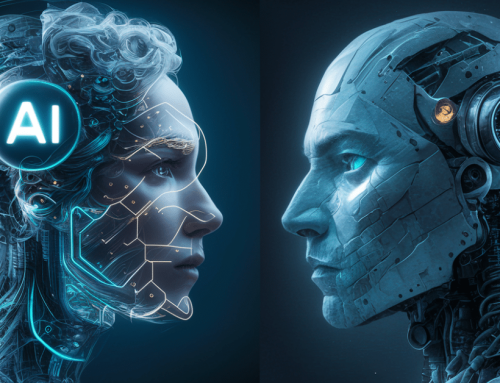The instant blockchain is mentioned, people immediately think of cryptocurrencies, and the opposite is also true.
The two are frequently used interchangeably because many people think they are interchangeable, yet this couldn’t be further from the truth. Blockchain technology is used by cryptocurrency to conduct its operations. You will learn about blockchain technology, how it functions, and how cryptocurrency relates to it in this comprehensive guide.
How Do Blockchains Work?
Bitcoin’s launch served as the catalyst for the invention of blockchain. Since Bitcoin was a cryptocurrency, rumors that blockchain and cryptocurrencies are the same have persisted.
Blockchain is a decentralized ledger that stores transaction records. These ledgers are unchangeable and are kept in a decentralized fashion. A transaction thus becomes irreversible once it has been authorized and included to a block. It will now constantly be present in the blockchain. Blockchain technology is unique because it is totally decentralized, which means that no single entity owns or controls it. It is for and belongs to consumers.
The information is kept in chunks. A specific amount of transactions make up each block. Once a block is finished, it is put to the blockchain, where it is approved by the network and rendered unchangeable.
Cryptocurrency: What Is It?
Crypto and currency combine to form the word cryptocurrency. While the definition of currency is obvious—it is money—crypto means written in codes or encrypted. Therefore, the definition of a cryptocurrency is a digital asset with monetary worth. It is designed to facilitate simple trading, which is where blockchain enters the picture. Blockchain technology is used to track every cryptocurrency transaction that occurs.
Bitcoin, the original cryptocurrency, came to be equated with the blockchain. Since then, the market has seen the entry of thousands of cryptocurrencies.
How Do Blockchain and Cryptocurrency Go Together?
Blockchain and cryptocurrencies combine to produce a decentralized, secure, entirely digital trail of transactions. There is no office, no storage facility for the servers, and no other location where activities are carried out. The following is a discussion of how the two are similar:
Innovative Technologies
Blockchain and cryptocurrency are both cutting-edge technology that many people are still interested in learning more about. Many people find it annoying that there is no authority to supervise. Another cutting-edge technology that was illogical when it first appeared was cryptocurrency. People had doubts about how they could conduct transactions using a form of money that didn’t actually exist. But they are now generally recognized.
Distributed Ledger
Cryptocurrencies and the blockchain are both intangible objects. There isn’t a computer or server where you can access all the info. Therefore, since the blockchain is a distributed ledger, there is no ownership. The same is true of cryptocurrencies because they are so dissimilar to fiat money. You cannot physically hold it or touch it.
Mutual Dependence
For Bitcoin, blockchain technology was developed. Or it may be stated that Bitcoin would not have been if there had been no blockchain. Blockchain is hence the basis for cryptocurrencies. Both technologies rely on one another.
Blockchain Applications Beyond Cryptocurrency
Although the blockchain is heavily reliant on cryptocurrency, it has applications well beyond them. It can be applied in a variety of creative ways, including.
To Facilitate Transfer and Exchange
The financial industry’s future will be led by blockchain. The financial sector wants to make transfers and swaps simple, but conventional banking procedures take time, whereas blockchain transactions are quick, simple, and secure. Additionally, they provide users the convenience of conducting business directly with one another and do away with the necessity for intermediaries like banks. Additionally, it promotes openness and security because every transaction is documented and finalized.
NFTs
Due to their distinctiveness, NFTs, or Non-fungible Tokens, are rapidly rising in favor. They represent possession of a resource. Anything from a work of art to a digital asset like coins can be used as currency. They are frequently employed in the metaverse and have developed a new identity as a result. They are likewise built on the blockchain.
Smart Contracts
Smart contracts, which are transparent, self-executing, and secure, have been launched with the most recent blockchain technologies. As and when the parties complete the terms of the contract, these smart contracts automatically execute, recording the terms of the agreement. They can therefore serve a variety of functions, which can greatly reduce business expenses.
Cybersecurity
Blockchain technology is decentralized, thus a hacker cannot focus on a single point. Blockchains are the most secure storage because of the dispersed nature of the data. It is also simple to track down changes that were done without authorization.
Transparency
Blockchains’ transparency can be utilized to transfer records between sectors to speed up processing. Patient records, for instance, can be easily made available to insurance companies in the context of health insurance. In addition, insurance companies can handle claims with ease because the data on the blockchain is validated.
Voting Integrity
Elections are frequently referred to as fraudulent, and regardless of the employment of cutting-edge technology, there will always be a question mark over their validity. Blockchains could do away with it. Blockchain-enabled election systems eliminate the possibility of fraud and tampering with voting records. Instantaneous outcomes will be a bonus.
Can Cryptocurrencies Survive Without Blockchain Technology?
Bitcoin, the first cryptocurrency ever, was built using blockchain technology. Although they helped each other become well-known, it has always been unclear if cryptocurrencies will survive without blockchain technology.
Following Bitcoin, all subsequent cryptocurrencies used blockchain technology, and in the eyes of the general public, blockchain and cryptocurrencies became inseparable. The majority of cryptocurrencies are still utilizing blockchain technologies today.
However, it does not ensure that the two technologies will eventually work together. One such cryptocurrency that is not based on a blockchain is IOTA. Instead, it was developed on the basis of the mathematical idea known as “Tangle,” and it has already generated interest. Reason? Its owners assert that it will outperform Bitcoin and grow quicker.
It is simply the beginning of a new era where blockchain technology and cryptocurrencies will undergo unthinkable changes and have unpredicted effects on the future.
In closing
The only thing the future guarantees is that cryptocurrencies and blockchain technology will gain more adoption. These two technologies, though, are separate from one another and exist side by side. Everything you require to know about the connection between the two and their differences is included in this tutorial.
Whether its a new blockchain project, or cryptocurrency that you are looking at getting started, Seattle Software Developers can help. Contact us today to talk with a web 3 developer!




